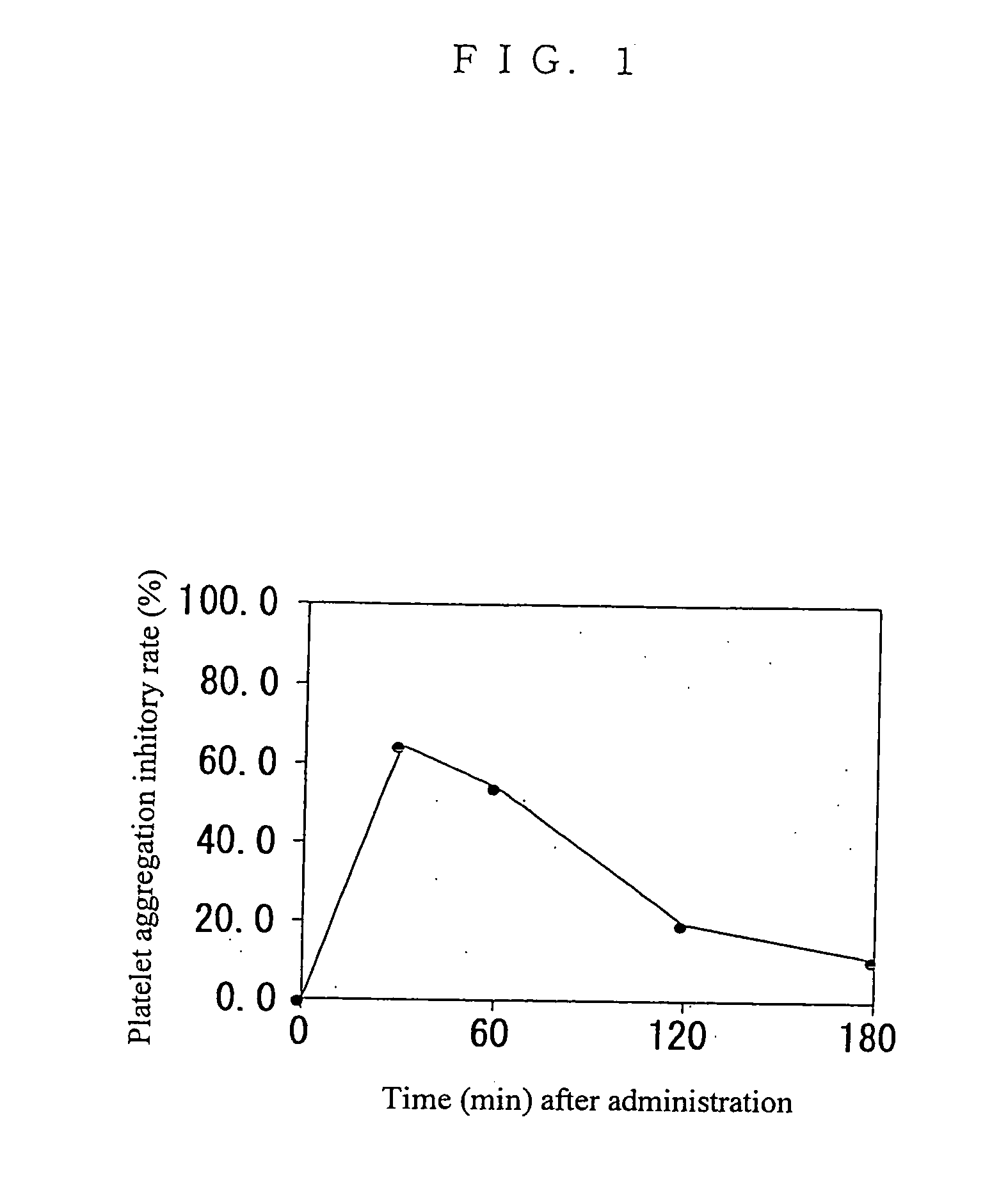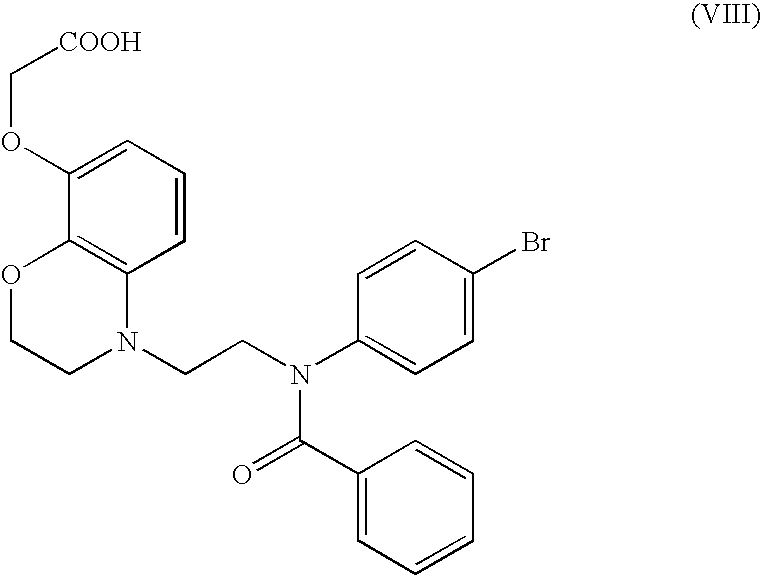Benzomorpholine derivatives
- Summary
- Abstract
- Description
- Claims
- Application Information
AI Technical Summary
Benefits of technology
Problems solved by technology
Method used
Image
Examples
reference example 1
Mesylation Reaction
To a solution of methyl 4-(2-hydroxyethyl)-3,4-dihydro-2H-1,4-benzoxazine-8-yloxyacetate (15.7 g, 58.7 mmol) and triethylamine (29.5 ml, 211.7 mmol) in methylene chloride (360 ml), mesyl chloride (4.6 ml, 58.3 mmol) was added at 0° C., followed by stirring for one hour. The reaction solution was added to 5% aqueous citric acid, followed by ethyl acetate extraction. Organic layers were washed with water and brine, dried over MgSO4, and then concentrated to obtain a mesylated product (17.8 g, 51.5 mmol). The mesylated product required no purification and was directly used for the next reaction.
example 1
Condensation Reaction (General Procedure)
A solution of benzanilide (15 mmol) in DMF (30 ml) was added to NaH (15 mmol), followed by stirring at room temperature for 30 minutes.
Subsequently, a solution of methyl 4-(2-mesyloxyethyl)-3,4-dihydro-2H-1,4-benzoxazine-8-yloxyacetate (12 mmol) obtained in Reference example 1 in DMF (15 ml) was added, followed by stirring at 80° C. for 5 hours. The solvent was removed under reduced pressure and then the residue was added to 5% citric acid, followed by ethyl acetate extraction. Organic layers were washed with water and brine, dried over MgSO4, and then concentrated. The residue was purified by column chromatography (silica gel, eluent; AcOEt / n-hexane=1:1) and recrystallization (AcOEt / n-hexane) to give a target methyl ester.
Subsequently, to a solution of the methyl ester in ethanol (10 ml) and THF (30 ml), 2.0 N aqueous sodium hydroxide (1.2 eq) was added, followed by stirring at room temperature for one hour. The solvent was removed und...
reference example 2
N-alkylation Reaction
4-Bromoaniline (440 mg, 2.6 mmol) was added to a solution of the mesylated product (0.52 mmol) obtained in Reference example 1 in acetonitrile (10 ml), followed by heating under reflux for 48 hours. Saturated aqueous NaHCO3 was added to the reaction mixture, followed by ethyl acetate extraction. Organic layers were washed with water and brine, dried over MgSO4, and then concentrated. The residue was purified by column chromatography (silica gel, eluent; AcOEt / n-hexane=1:1), so that N-alkylated product (0.45 mmol) was obtained in the form of white crystal (melting point between 76° C. and 79° C.).
1H NMR data of the obtained N-alkylated product are shown below.
1H NMR (300 MHz, CDCl3) δ 3.30-3.40 (m, 4H), 3.48 (t, J=2.9 Hz, 2H), 3.80 (s, 3H), 4.28 (dd, J=2.0, 2.0 Hz, 2H), 4.68 (s, 2H), 6.27 (dd, J=8.2, 1.2 Hz, 1H), 6.43 (dd, J=8.2, 1.2 Hz, 1H), 6.50 (d, J=8.9 Hz, 2H), 6.73 (t, J=8.2 Hz, 2H), 7.26 (d, J=8.9 Hz, 2H)
PUM
| Property | Measurement | Unit |
|---|---|---|
| Molar density | aaaaa | aaaaa |
| Molar density | aaaaa | aaaaa |
| Molar density | aaaaa | aaaaa |
Abstract
Description
Claims
Application Information
 Login to View More
Login to View More - R&D
- Intellectual Property
- Life Sciences
- Materials
- Tech Scout
- Unparalleled Data Quality
- Higher Quality Content
- 60% Fewer Hallucinations
Browse by: Latest US Patents, China's latest patents, Technical Efficacy Thesaurus, Application Domain, Technology Topic, Popular Technical Reports.
© 2025 PatSnap. All rights reserved.Legal|Privacy policy|Modern Slavery Act Transparency Statement|Sitemap|About US| Contact US: help@patsnap.com



